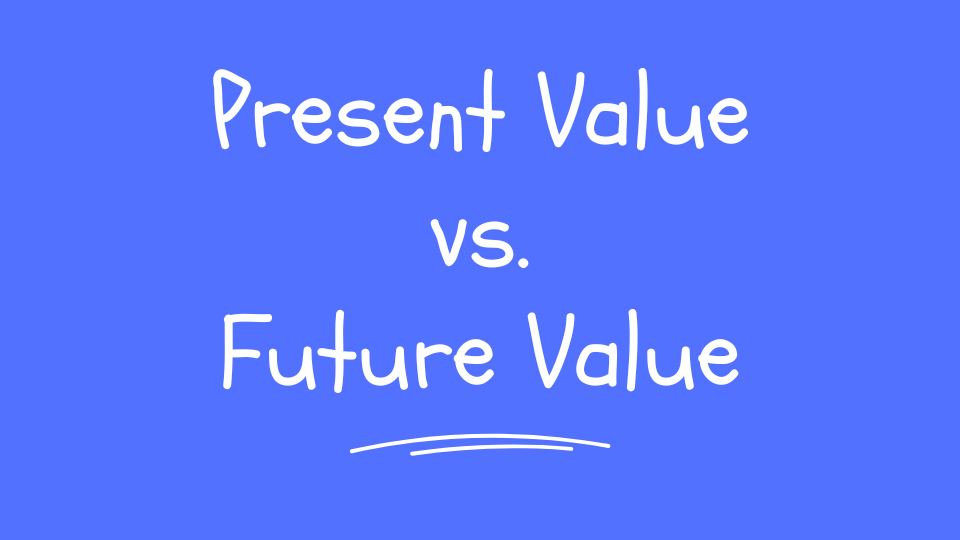Present Value vs. Future Value: The Invisible Tug-of-War That Shapes Your Wealth
- BetterYourFinance.com

- Jul 14
- 3 min read

Ever feel like your money is slipping through your fingers before you even spend it? That uneasy feeling isn’t just a budgeting issue—it’s a signal that you may not fully understand one of the most important financial dynamics: the relationship between present value and future value. This unseen relationship impacts every savings decision, investment choice, and debt you take on. When you understand how these two forces pull against each other, you gain the power to make more aligned and intentional financial choices.
What You’ll Learn:
The core difference between present and future value
Why they move in opposite directions
How to calculate each
How to use this insight to make smarter money decisions
A real-life example that ties it all together
A personal transformation story you might see yourself in
What Is It?
Present value (PV) is the worth of money today.
Future value (FV) is the worth of that same money at a later date, assuming it earns interest or grows in value.
They are two sides of the same coin—but the trick is this: the higher your expectations for future growth, the less today’s money is worth in present terms (and vice versa). That’s where their inverse relationship kicks in.
Why Does It Matter?
This dynamic matters because every financial decision is rooted in time. Should you take $10,000 now or $12,000 in 3 years? Should you save $100 per month starting now or wait until next year? Understanding the tug-of-war between PV and FV helps answer these questions with clarity, not guesswork.
How to Calculate It
Future Value Formula:
FV = PV × (1 + r)ⁿ
Where:
PV = present value
r = interest rate (as a decimal)
n = number of periods
Present Value Formula:
PV = FV ÷ (1 + r)ⁿ
These formulas are two expressions of the same truth: money grows (or shrinks) over time depending on the rate of return and time horizon.
Using an Example to Calculate It
Let’s say Ann is offered two options:
Get $10,000 today, or
Get $12,000 five years from now.
Ann wants to know which option is worth more today if she could earn 5% interest annually.
Using the present value formula:
PV = $12,000 ÷ (1 + 0.05)⁵
PV = $12,000 ÷ 1.27628
PV ≈ $9,399
Conclusion: That $12,000 in five years is only worth about $9,399 today. If Ann can earn 5% interest on her money, she’s better off taking the $10,000 now and investing it.
A Transformation Story
John used to think saving was all about dollar amounts. But when he learned about PV and FV, everything changed. Instead of focusing on whether he was saving enough, he began focusing on when he was saving. That small mental shift helped him increase his retirement savings by 40% over three years—without earning a dollar more. He simply got smarter about timing.
Strategies to Maximize Your Growth
Start early: The earlier you save, the more your money grows.
Understand opportunity cost: Every dollar you spend today could’ve been worth more tomorrow.
Don’t underestimate inflation: It erodes future purchasing power—plan accordingly.
Use a financial calculator to run FV/PV scenarios for major decisions.
Why This Is Important
Because financial peace doesn’t come from earning more—it comes from thinking better. If you don’t grasp the inverse pull of present and future value, you’ll either delay goals too long or rush into decisions with blind spots.
Steps You Can Take to Get Started
Use a free online PV/FV calculator to run your own scenarios.
Make a list of major future expenses (college, retirement, home upgrades).
Start calculating what you need to save today to meet those goals tomorrow.
Adjust your saving or investing based on these insights.
Final Thoughts
Your money isn’t just what’s in your bank account. It’s also what your dollars are doing over time. Understanding the inverse dance between present and future value empowers you to turn every financial decision into an intentional act of wealth-building. The sooner you understand this relationship, the sooner your money starts working for you, not against you.




Comments